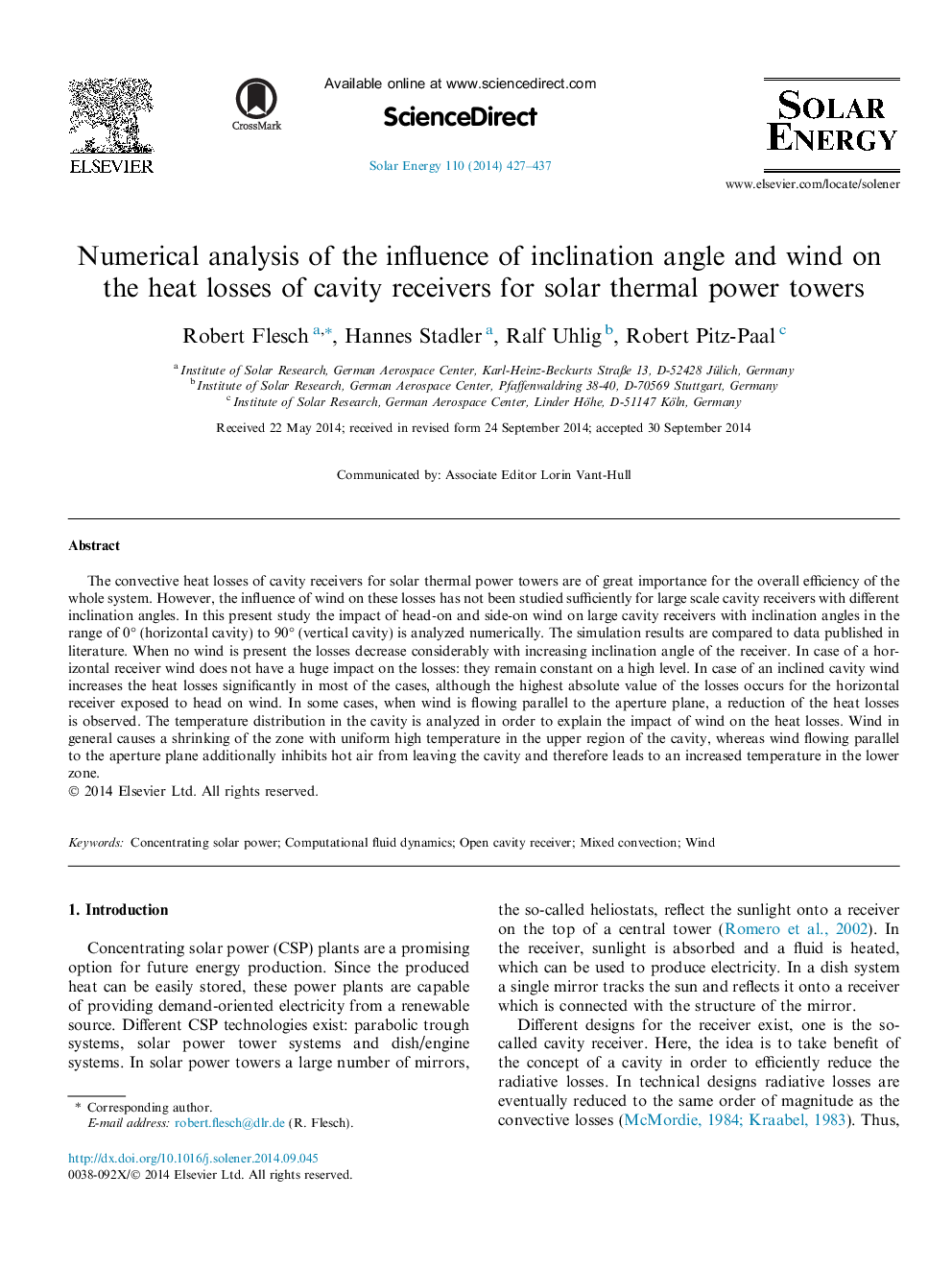| کد مقاله | کد نشریه | سال انتشار | مقاله انگلیسی | نسخه تمام متن |
|---|---|---|---|---|
| 7938204 | 1513108 | 2014 | 11 صفحه PDF | دانلود رایگان |
عنوان انگلیسی مقاله ISI
Numerical analysis of the influence of inclination angle and wind on the heat losses of cavity receivers for solar thermal power towers
ترجمه فارسی عنوان
تجزیه و تحلیل عددی اثر زاویه گرانشی و باد بر تلفات گرمای گیرنده حفره برای برج های خورشیدی حرارتی
دانلود مقاله + سفارش ترجمه
دانلود مقاله ISI انگلیسی
رایگان برای ایرانیان
کلمات کلیدی
غلظت انرژی خورشیدی، دینامیک سیالات محاسباتی، گیرنده حفره باز، مخلوط مخلوط، باد،
موضوعات مرتبط
مهندسی و علوم پایه
مهندسی انرژی
انرژی های تجدید پذیر، توسعه پایدار و محیط زیست
چکیده انگلیسی
The convective heat losses of cavity receivers for solar thermal power towers are of great importance for the overall efficiency of the whole system. However, the influence of wind on these losses has not been studied sufficiently for large scale cavity receivers with different inclination angles. In this present study the impact of head-on and side-on wind on large cavity receivers with inclination angles in the range of 0° (horizontal cavity) to 90° (vertical cavity) is analyzed numerically. The simulation results are compared to data published in literature. When no wind is present the losses decrease considerably with increasing inclination angle of the receiver. In case of a horizontal receiver wind does not have a huge impact on the losses: they remain constant on a high level. In case of an inclined cavity wind increases the heat losses significantly in most of the cases, although the highest absolute value of the losses occurs for the horizontal receiver exposed to head on wind. In some cases, when wind is flowing parallel to the aperture plane, a reduction of the heat losses is observed. The temperature distribution in the cavity is analyzed in order to explain the impact of wind on the heat losses. Wind in general causes a shrinking of the zone with uniform high temperature in the upper region of the cavity, whereas wind flowing parallel to the aperture plane additionally inhibits hot air from leaving the cavity and therefore leads to an increased temperature in the lower zone.
ناشر
Database: Elsevier - ScienceDirect (ساینس دایرکت)
Journal: Solar Energy - Volume 110, December 2014, Pages 427-437
Journal: Solar Energy - Volume 110, December 2014, Pages 427-437
نویسندگان
Robert Flesch, Hannes Stadler, Ralf Uhlig, Robert Pitz-Paal,
